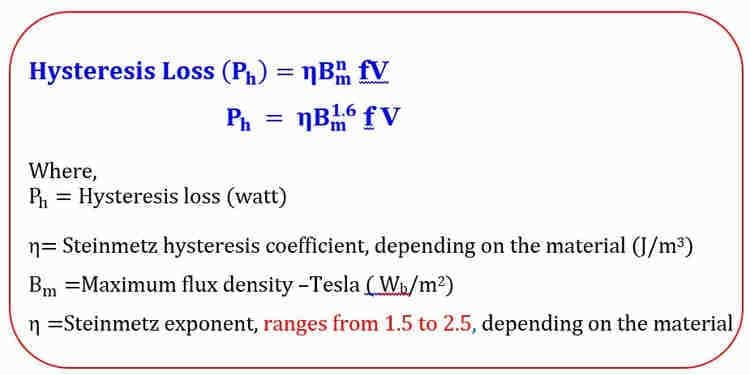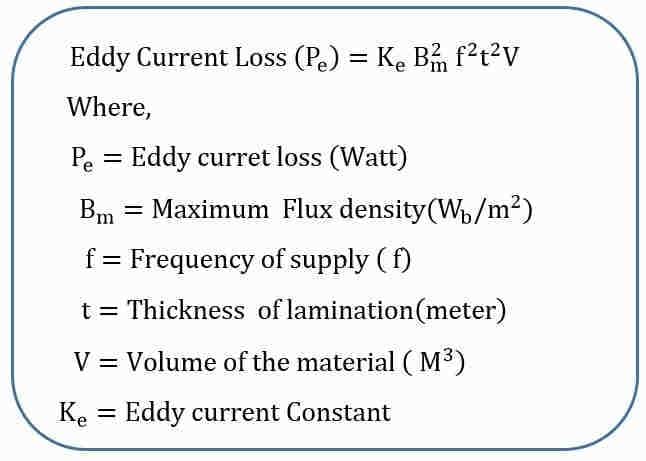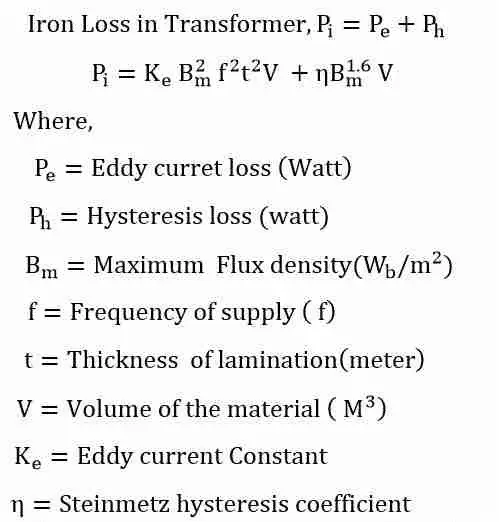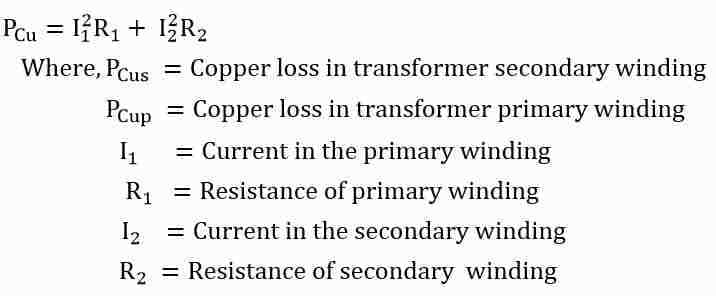In this article, we will discuss the difference between copper loss and iron loss of the transformer. what are copper loss and iron loss and how do these losses affect the efficiency of the transformer. The copper loss and iron loss in the transformer are types of electrical losses that take place in the core and winding of the transformer. The iron loss occurs due to variation of flux density in the transformer core and copper loss occurs due to I2R in the transformer winding.
The transformer is a static piece of equipment and there are no moving parts in it. Therefore, the mechanical losses in the transformer are almost nil.
What is loss? If we input X energy to a transformer and if we get X energy at the output, then the transformer is 100% efficient, which means there are no losses. However, the output can not be equal to the input, it is always less than the input. The reason for less output is the losses. During the power conversion process, some of the energy is lost and in reality, the transformer can not be 100 % efficient.
Iron Loss in Transformer
Let us understand what is the energy conversion process in the transformer to understand the types of losses in the transformer. The electrical energy is first converted into mechanical energy. The magnetic energy flow through the magnetic core. The energy is wasted in the core during magnetization and demagnetization of the core. The iron losses in the iron core of the transformer take place on two accounts.
- Hysteresis loss
- Eddy current loss
What is Hysteresis Loss in Transformer?
The transformer core goes under magnetization and demagnetization process when primary winding receives alternating voltage. The cyclic reversal of the magnetic core cause heat loss in the core. The heat loss in the core due to repeated magnetization demagnetization is called hysteresis loss.
Factors on hysteresis loss depend
- Maximum flux density
- Frequency of supply
- The volume of core material
The hysteresis loss formula is given below.

The transformer hysteresis loss can be reduced by selecting a core material that has lower flux density and lower weight. The less the area of the BH curve, the less is the hysteresis loss.
Ways of reducing hysteresis loss in the transformer
- Selecting CRGO core material of less magnetic flux density
- Operating the transformer at rated voltage and frequency
What is Eddy Current Loss in Transformer?
The flux produced by primary winding travels through the magnetic core. and it links to the secondary winding. Some part of the flux links to the core and induce voltage of different magnitude in the core. The difference of voltage causes current to flow from one part of the core to other parts, The current that circulates between two points of the core is the eddy current. The core material has certain resistance and energy lost in the core is;
P = I2 x CRGO core resistance (R)
Factors on which eddy current loss depend
- Maximum flux density in the core
- Supply frequency
- The thickness of the lamination
- Volume of the core material
- Resistivity of the core material
The eddy current loss formula is ;

Ways of reducing eddy current loss in the transformer
- Operating the transformer at rated voltage and rated frequency
- Use of thin laminated sheet for transformer core
- Higher resistivity of the core material
Iron Loss in Transformer
The total iron loss is equal to the sum of hysteresis loss and eddy current loss. The transformer iron loss remains constant if the supply voltage and frequency are constant. That is why iron loss is also called constant loss.
The transformer Iron loss formula is ;

Some parts of the flux leak and link to the transformer mechanical structure and winding. The leakage flux leads to a stray loss in the transformer.
Copper Loss in Transformer
The transformer primary and secondary winding has a certain resistance. The resistance of the winding depends on the diameter of the wire and the number of turns. The current flowing in the primary and secondary winding causes heat loss in the winding. The heat loss in the winding is the copper loss. The copper loss depends on;
- Square of the current flowing in the winding
- Resistance of the winding
The copper loss in the primary winding of the transformer is ;

The copper loss in the secondary winding of the transformer is ;

The total copper loss of the transformer is;

The copper loss in the transformer depends on the current drawn from the secondary of the transformer. Thus, the copper loss is a variable loss and it depends on the transformer loading.
At the design stage, the designer can take the transformer primary and secondary winding conductor cross-section area more to reduce the copper loss. The copper weight decrease with increasing conductor cross-section area. however, the cost of the transformer increase.
Related Posts